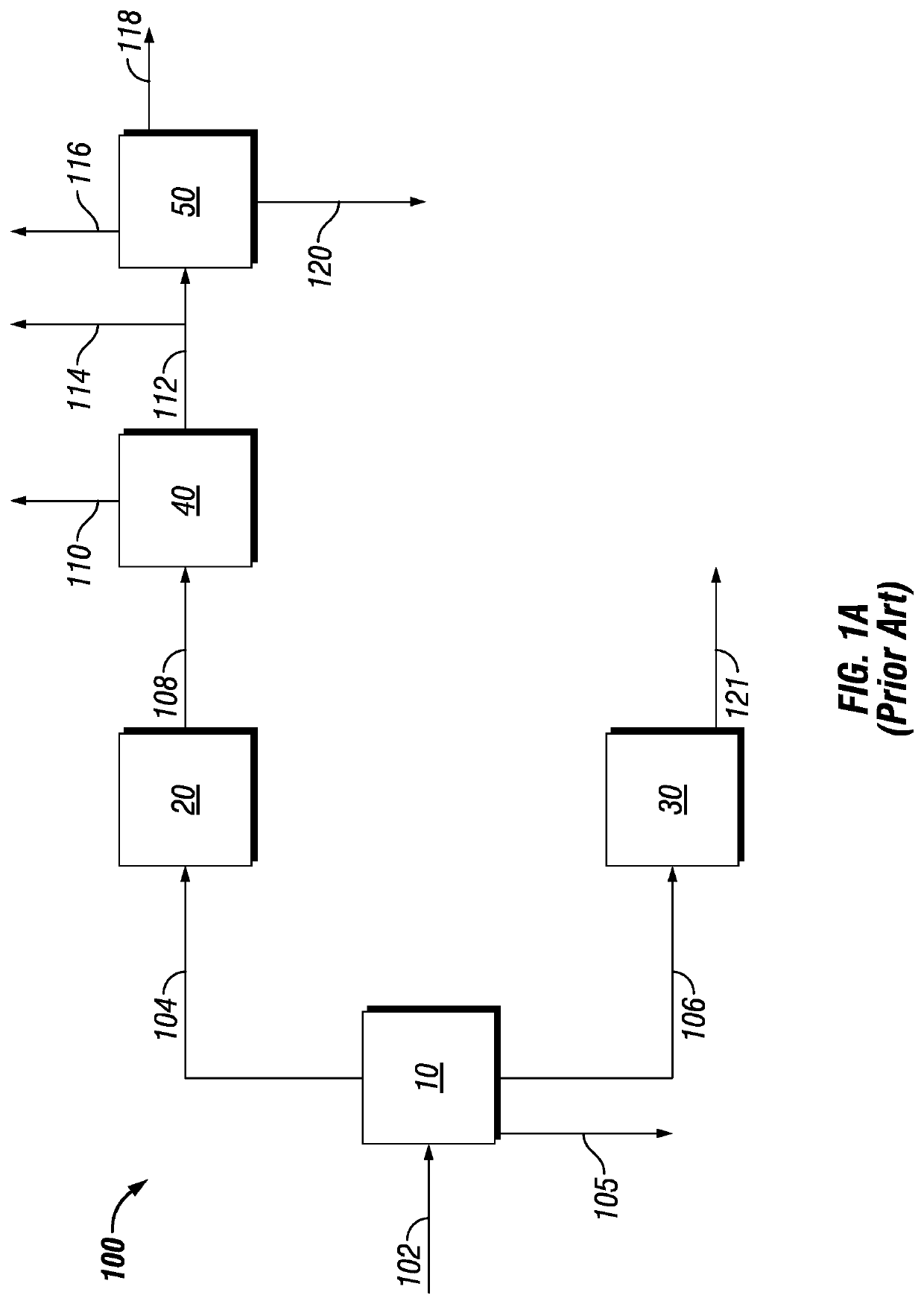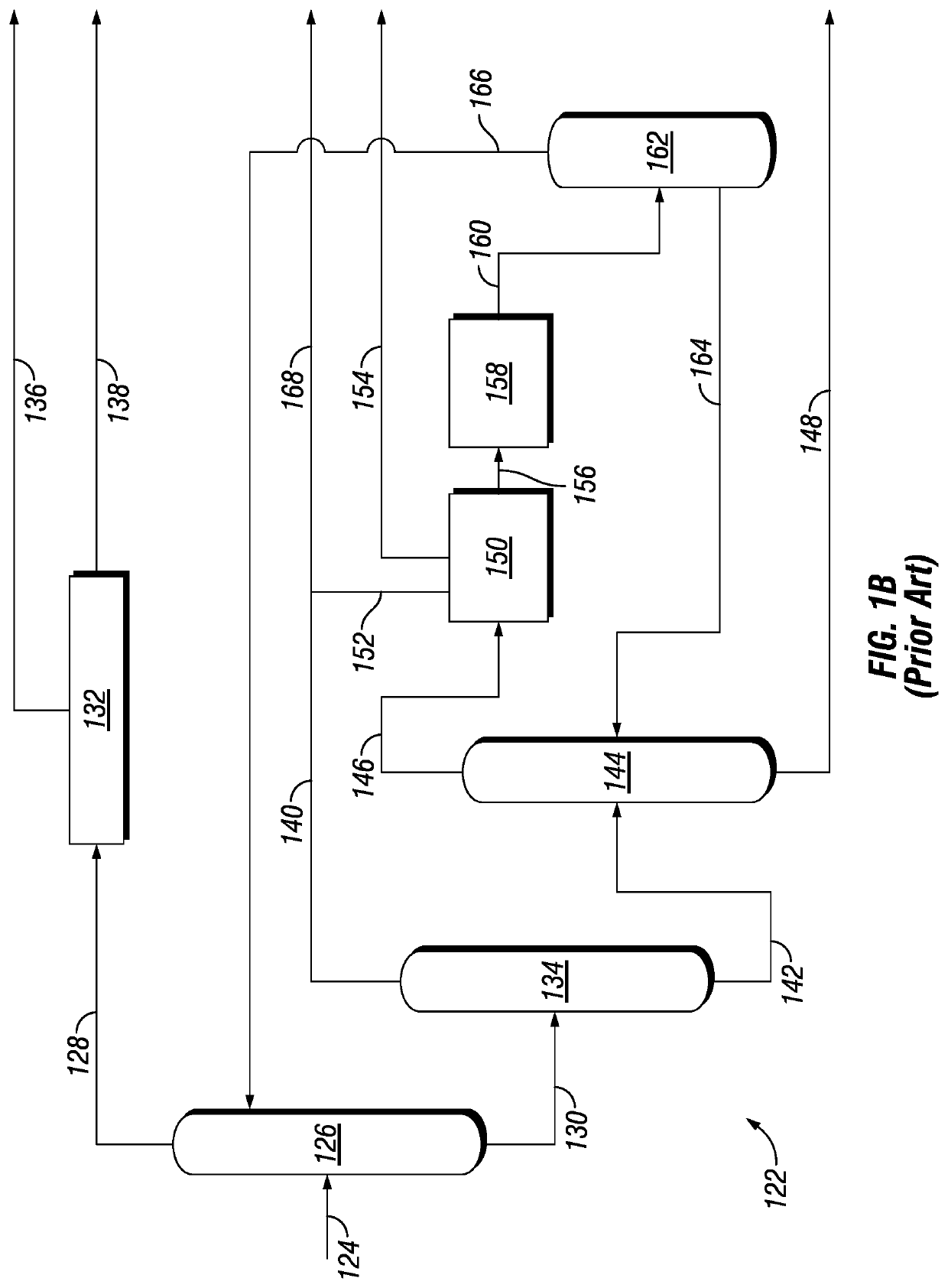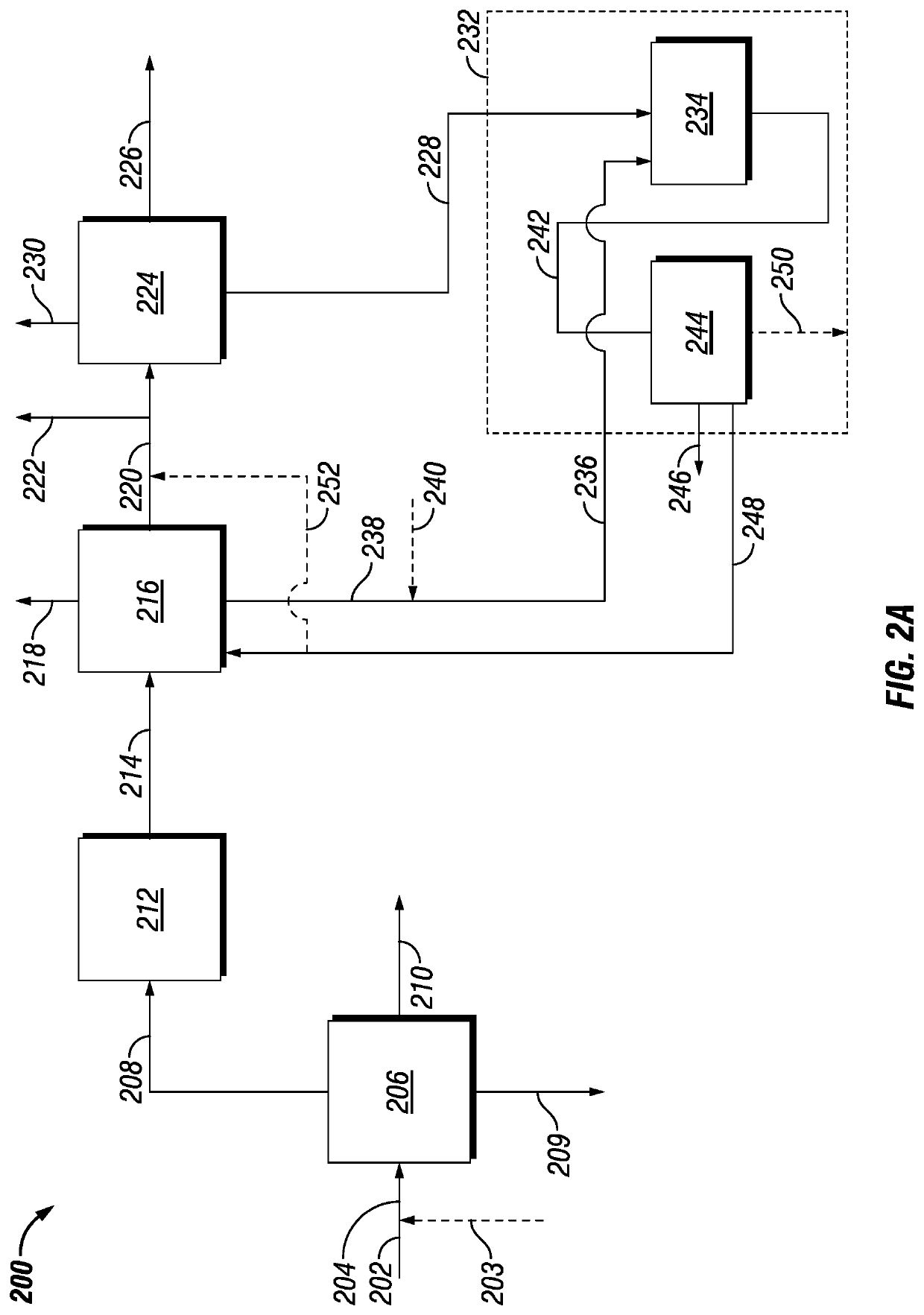Two stage hydrodearylation systems and processes to convert heavy aromatics into gasoline blending components and chemical grade aromatics
a hydrodearylation system and aromatic technology, applied in the field of hydrodearylation systems and processes for catalytic hydrodearylation and aromatic recovery, can solve the problems of deteriorating gasoline quality, most economically reducing benzene content, and not being suitable for gasoline blending components, so as to improve gasoline volume and quality, and improve fuel properties
- Summary
- Abstract
- Description
- Claims
- Application Information
AI Technical Summary
Benefits of technology
Problems solved by technology
Method used
Image
Examples
examples
[0049]In Example 1, 11.4775 kg of an aromatic bottoms fraction was distilled using a lab scale true boiling point distillation column with 15 or more theoretical plates using ASTM method D2917. 9.411 kg (82 W %) of a gasoline fraction boiling in the range of 36° C. to 180° C. was obtained, and 2.066 Kg (18 W %) of a residue stream boiling above 180° C. was obtained. The gasoline fraction was analyzed for its content and octane numbers.
[0050]
TABLE 1Properties of aromatic bottoms feed stream of Example 1.FeedstockAromaticTops GasolineBottoms DieselPropertyUnitBottomsIBP 180° C.−180° C.+Densityg / cc0.88380.87620.9181Octane Number—NA110NAASTM D2799Cetane Index—NANA12IBP° C.15367167 5 W %° C.1627317610 W %° C.1637318130 W %° C.1677619250 W %° C.1727719970 W %° C.1767920990 W %° C.1918131795 W %° C.20781333FBP° C.33383422Paraffinswt. %0.00n / an / aMono-aromaticswt. %94.1n / an / aNaphthenowt. %0.9n / an / aMono-aromaticsDi-aromaticswt. %3.7n / an / aNaphthenowt. %0.9n / an / adi-aromaticsTri+ Aromaticswt. %0...
PUM
| Property | Measurement | Unit |
|---|---|---|
| boiling point | aaaaa | aaaaa |
| boiling points | aaaaa | aaaaa |
| pressures | aaaaa | aaaaa |
Abstract
Description
Claims
Application Information
 Login to View More
Login to View More - R&D
- Intellectual Property
- Life Sciences
- Materials
- Tech Scout
- Unparalleled Data Quality
- Higher Quality Content
- 60% Fewer Hallucinations
Browse by: Latest US Patents, China's latest patents, Technical Efficacy Thesaurus, Application Domain, Technology Topic, Popular Technical Reports.
© 2025 PatSnap. All rights reserved.Legal|Privacy policy|Modern Slavery Act Transparency Statement|Sitemap|About US| Contact US: help@patsnap.com



